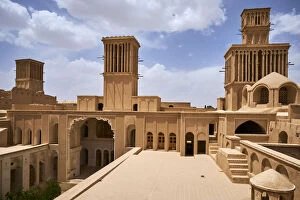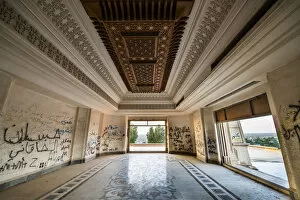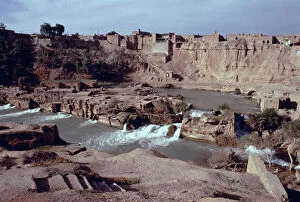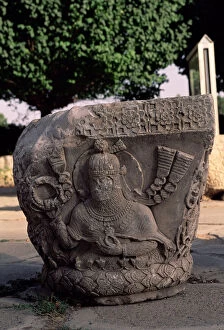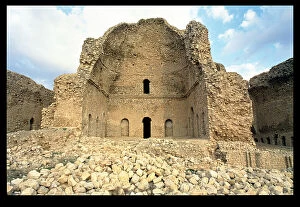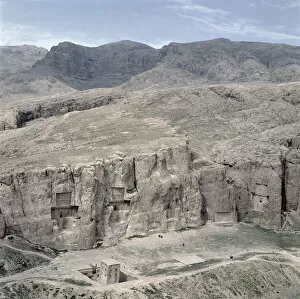Iranian Architecture Collection
Iranian architecture is a captivating blend of history, culture, and artistry that showcases the rich heritage of this ancient land
For sale as Licensed Images
Choose your image, Select your licence and Download the media
Iranian architecture is a captivating blend of history, culture, and artistry that showcases the rich heritage of this ancient land. In the Yazd province of Iran lies Abarkuh, a town known for its architectural wonders. One such marvel is Aghazadeh, a traditional house adorned with magnificent badgirs or windtowers that not only provide ventilation but also add to the aesthetic appeal. Moving towards Iraq, we find ourselves in Babylon where Saddam Hussein's summer palace stands as a testament to opulence and grandeur. The remnants of this majestic structure offer glimpses into an era long gone by. As we explore further, we come across the remains of the Sika bridge-dam-waterway complex on the Gar-Gar River. This engineering marvel once served as a lifeline for the city it accompanied and now serves as a reminder of human ingenuity throughout history. Delving deeper into Iran's past, we encounter Khosrow II depicted as a victorious warrior in stone at Capital City around 620 AD. This intricate carving reflects both artistic finesse and historical significance. Stepping inside one of Iran's domed halls from 220-30 AD reveals an awe-inspiring interior that leaves visitors spellbound. The craftsmanship displayed within these walls speaks volumes about Iranian architectural prowess. Venturing into rocky landscapes unveils sepulchres cut into solid rock formations - silent witnesses to ancient burial practices that have stood against time itself. The west entrance to Hundred Column Hall beckons us with rows upon rows of dignitaries supporting its structure - each figure representing an integral part in creating this architectural masterpiece. A view from afar captures our attention at the west entrance to Hundred Column Hall; its sheer magnificence takes our breath away while reminding us of humanity's ability to create beauty amidst chaos. In Shiraz lies Nasir al Molk mosque which enchants visitors with its vibrant stained glass windows casting colorful hues upon the prayer hall.

